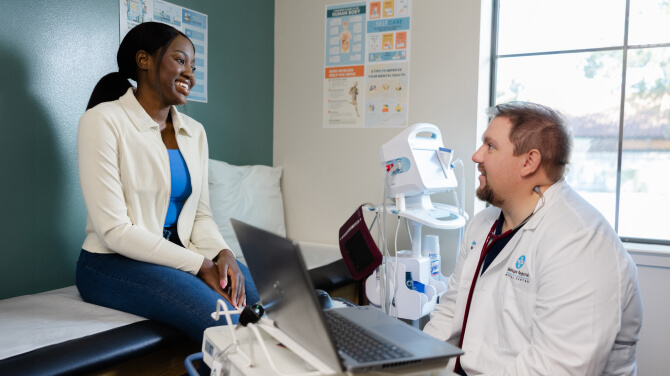Resource Center
All ContentBlogCase StudiesCustomer Success StoriesebooksWebinars
Accuracy, time, and work-life balance
- 36%Reduction in after-hours documentation time
- 12%increase in Same-Day Encounter Close rate
- 3.6Minutes saved per encounter
More resources

primary care
Enhancing efficiency and patient experience with NextPatient
- 40%online appointments made after hours
- 25%appointments booked online are new patients
- 4.9star Google rating

- Bob Segert
- January 20, 2026
- 3 min read
AI in healthcare
Why trust, not speed, defines AI healthcare success
What do clinicians really think about AI? Our latest study reveals unexpected findings.
Read more- athenahealth
- January 16, 2026
- 5 min read
optimize scheduling
Smarter orthopedic intake, scheduling, and collections
See how orthopedic patient intake software from athenaOne streamlines operations. Get started today.
Read more- athenahealth
- January 15, 2026
- 4 min read
medical coding & billing
3 ways to improve medical coding speed and accuracy
Need help handling the complexities of medical coding? These three features can make it simpler.
Read more
primary care
Enhancing efficiency and patient experience with NextPatient
- 40%online appointments made after hours
- 25%appointments booked online are new patients
- 4.9star Google rating

- Bob Segert
- January 20, 2026
- 3 min read
AI in healthcare
Why trust, not speed, defines AI healthcare success
What do clinicians really think about AI? Our latest study reveals unexpected findings.
Read more- athenahealth
- January 16, 2026
- 5 min read
optimize scheduling
Smarter orthopedic intake, scheduling, and collections
See how orthopedic patient intake software from athenaOne streamlines operations. Get started today.
Read more- athenahealth
- January 15, 2026
- 4 min read
medical coding & billing
3 ways to improve medical coding speed and accuracy
Need help handling the complexities of medical coding? These three features can make it simpler.
Read more
primary care
Enhancing efficiency and patient experience with NextPatient
- 40%online appointments made after hours
- 25%appointments booked online are new patients
- 4.9star Google rating
Dive deeper into research

Engaged patients are loyal patients
Learn how digital engagement tools improve care and retention.





